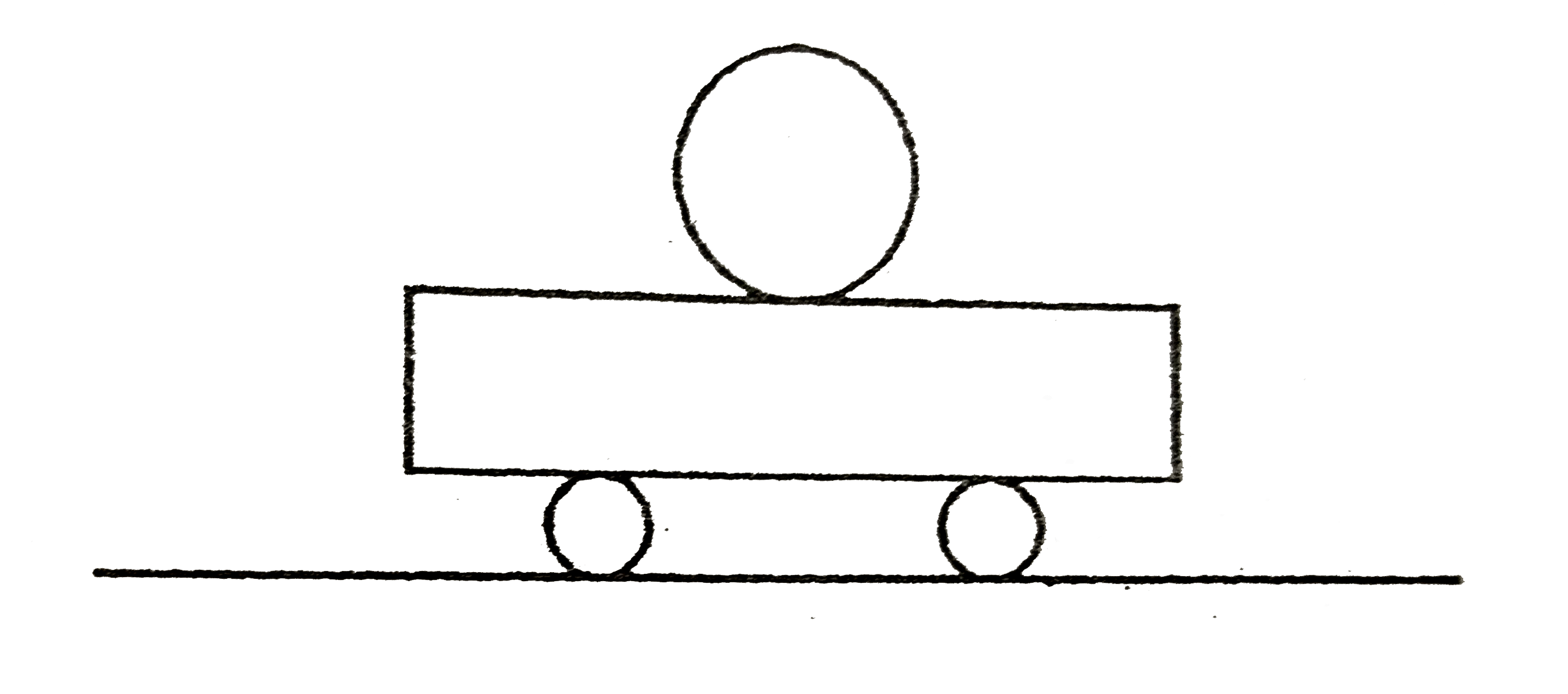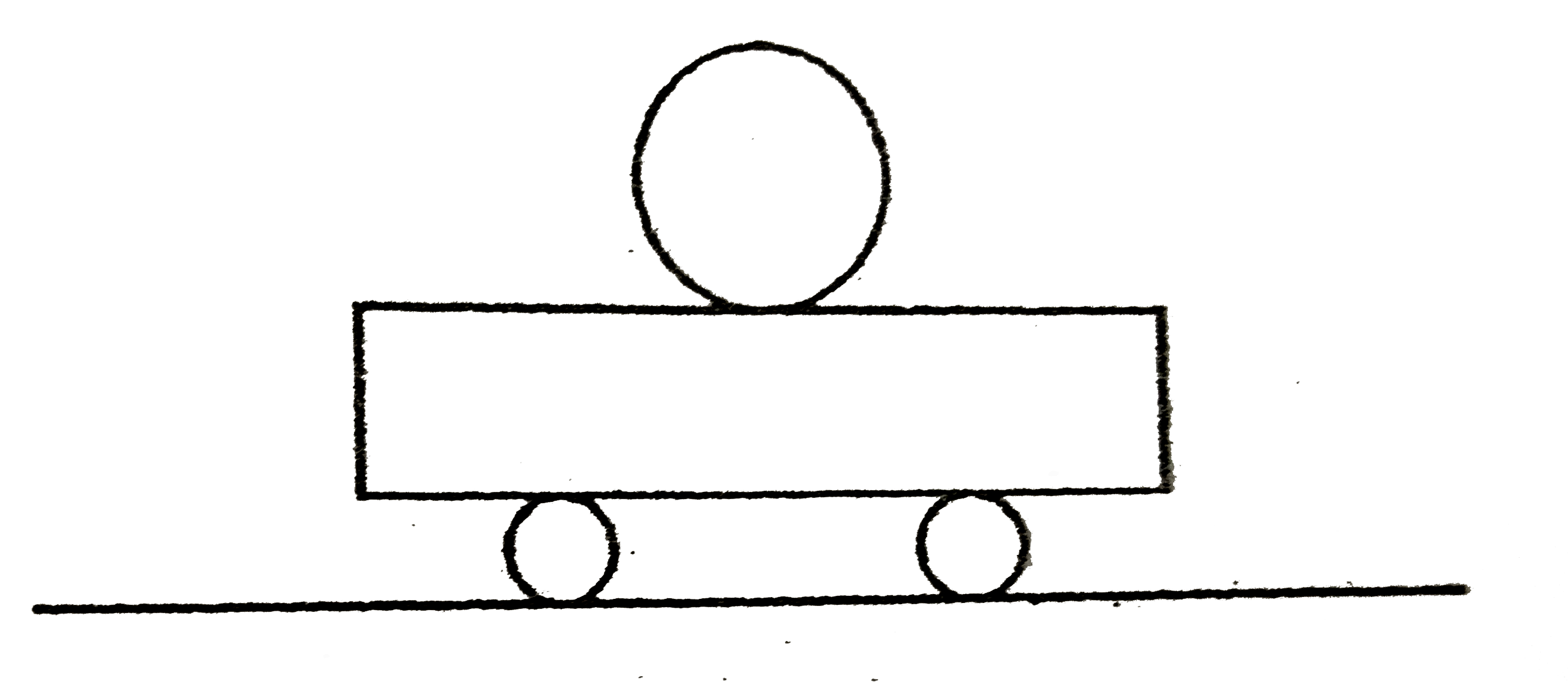A solid sphere of mass m& rdius R is divided in two parts of m mass 7m8&m8, and converted to a disc of radius 2R& solid sphere of radius 'r' respectively. Find I1I2 , If I1&I2 are moment of inertia of disc & solid sphere respectively
160
140
240
120
The correct Answer is:B
To find the ratio of the moments of inertia I1I2 for the given solid sphere and the disk, we will follow these steps:
Step 1: Calculate the Moment of Inertia of the Disk I1
The moment of inertia I for a disk about its central axis is given by the formula:
I=12mr2
In this case, the mass of the disk is 7m8 and the radius of the disk is 2R. Therefore, we can calculate I1:
I1=12(7m8)(2R)2
Calculating (2R)2:
(2R)2=4R2
Now substituting this back into the equation for I1:
I1=12(7m8)(4R2)=7m8⋅2R2=14mR28=7mR24
Step 2: Calculate the Moment of Inertia of the Solid Sphere I2
The moment of inertia I for a solid sphere about its central axis is given by the formula:
I=25mr2
Here, the mass of the solid sphere is m8 and we need to find the radius r of this smaller sphere. To find r, we will use the fact that the densities of the two spheres are equal.
The density ρ of the larger sphere is:
ρ=m43πR3
The density ρ of the smaller sphere is:
ρ=m843πr3
Setting these equal gives:
m43πR3=m843πr3
Cancelling 43π and m from both sides, we have:
1R3=1/8r3
Cross-multiplying gives:
r3=R38⟹r=R2
Now substituting r back into the equation for I2:
I2=25(m8)(R2)2
Calculating (R2)2:
(R2)2=R24
Now substituting this back into the equation for I2:
I2=25(m8)(R24)=2mR25⋅32=mR280
Step 3: Calculate the Ratio I1I2
Now we can find the ratio:
I1I2=7mR24mR280
Cancelling mR2 from the numerator and denominator:
I1I2=74⋅80=5604=140
Final Answer
Thus, the ratio of the moments of inertia is:
I1I2=140
I=12mr2
In this case, the mass of the disk is 7m8 and the radius of the disk is 2R. Therefore, we can calculate I1:
I1=12(7m8)(2R)2
Calculating (2R)2:
(2R)2=4R2
Now substituting this back into the equation for I1:
I1=12(7m8)(4R2)=7m8⋅2R2=14mR28=7mR24
I=25mr2
Here, the mass of the solid sphere is m8 and we need to find the radius r of this smaller sphere. To find r, we will use the fact that the densities of the two spheres are equal.
ρ=m43πR3
The density ρ of the smaller sphere is:
ρ=m843πr3
Setting these equal gives:
m43πR3=m843πr3
Cancelling 43π and m from both sides, we have:
1R3=1/8r3
Cross-multiplying gives:
r3=R38⟹r=R2
I2=25(m8)(R2)2
Calculating (R2)2:
(R2)2=R24
Now substituting this back into the equation for I2:
I2=25(m8)(R24)=2mR25⋅32=mR280
I1I2=7mR24mR280
Cancelling mR2 from the numerator and denominator:
I1I2=74⋅80=5604=140
I1I2=140
Topper's Solved these Questions
Similar Questions
The magnitude of gravitational field at distances r1 and r2 from the centre of a uniform sphere of radius R and mass M, respectively. Find the ratio of (I1)/(I2)) if r1>R and r2>R.
View SolutionA solid sphere of mass M and radius R is pulled horizontally on a rough surface as shown in Fig. Choose the incorrect alternatives.

View SolutionThe moment of ineria (I) of a sphere of radius R and mass M is given by
View SolutionA uniform solid sphere of mass m and radius r is suspended symmetrically by a uniform thin spherical shell of radius 2r and mass m.
View Solution
A solid sphere of mass m and radius R is rolling without slipping as shown in figure. Find angular momentum of the sphere about z-axis.
View SolutionThree solid sphere of mass M and radius R are placed in contact as shown in figure. Find the potential energy of the system ?
View SolutionA solid sphere of mass m and radius R is placed over a plank of same mass m. There is sufficient friction between sphere and plank to prevent slipping.

Acceleration of centre of mass of sphere is
View SolutionA solid sphere of mass m and radius R is placed over a plank of same mass m. There is sufficient friction between sphere and plank to prevent slipping.

Angular acceleration of sphere is
View SolutionPercentage error in measuring the radius and mass of a solid sphere are 3 % & 1 % respectively. The error in measurement of moment of inertia about to its diameter is :-
View SolutionA solid sphere of mass m and radius R is placed over a plank of same mass m. There is sufficient friction between sphere and plank to prevent slipping. Force of friction between sphere and plank is

View Solution
